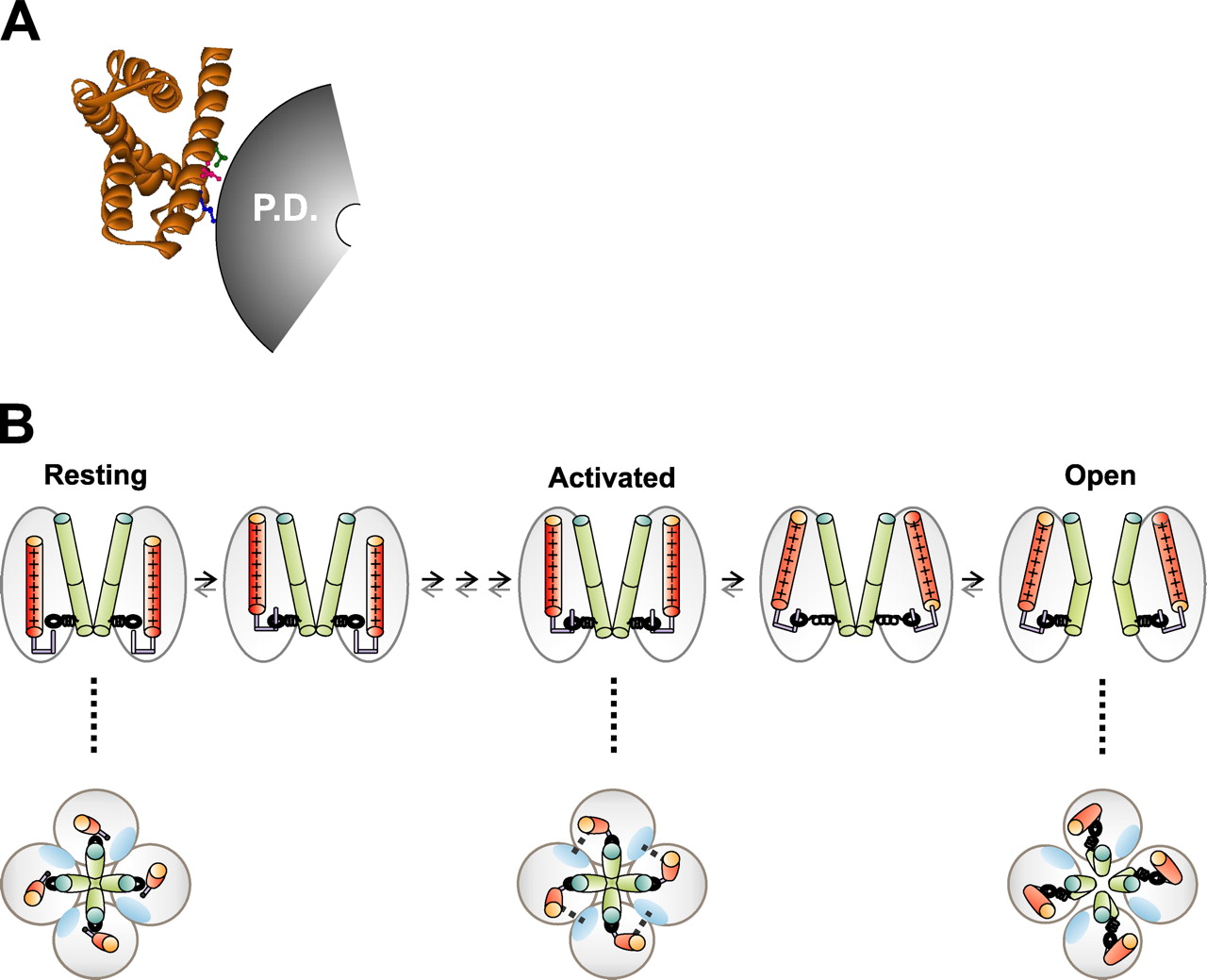
The cooperative voltage sensor motion that gates a potassium channel
Abstract
The four arginine-rich S4 helices of a voltage-gated channel move outward through the membrane in response to depolarization, opening and closing gates to generate a transient ionic current. Coupling of voltage sensing to gating was originally thought to operate with the S4s moving independently from an inward/resting to an outward/activated conformation, so that when all four S4s are activated, the gates are driven to open or closed. However, S4 has also been found to influence the cooperative opening step (Smith-Maxwell et al., 1998a), suggesting a more complex mechanism of coupling. Using fluorescence to monitor structural rearrangements in a Shaker channel mutant, the ILT channel (Ledwell and Aldrich, 1999), that energetically isolates the steps of activation from the cooperative opening step, we find that opening is accompanied by a previously unknown and cooperative movement of S4. This gating motion of S4 appears to be coupled to the internal S6 gate and to two forms of slow inactivation. Our results suggest that S4 plays a direct role in gating. While large transmembrane rearrangements of S4 may be required to unlock the gating machinery, as proposed before, it appears to be the gating motion of S4 that drives the gates to open and close.